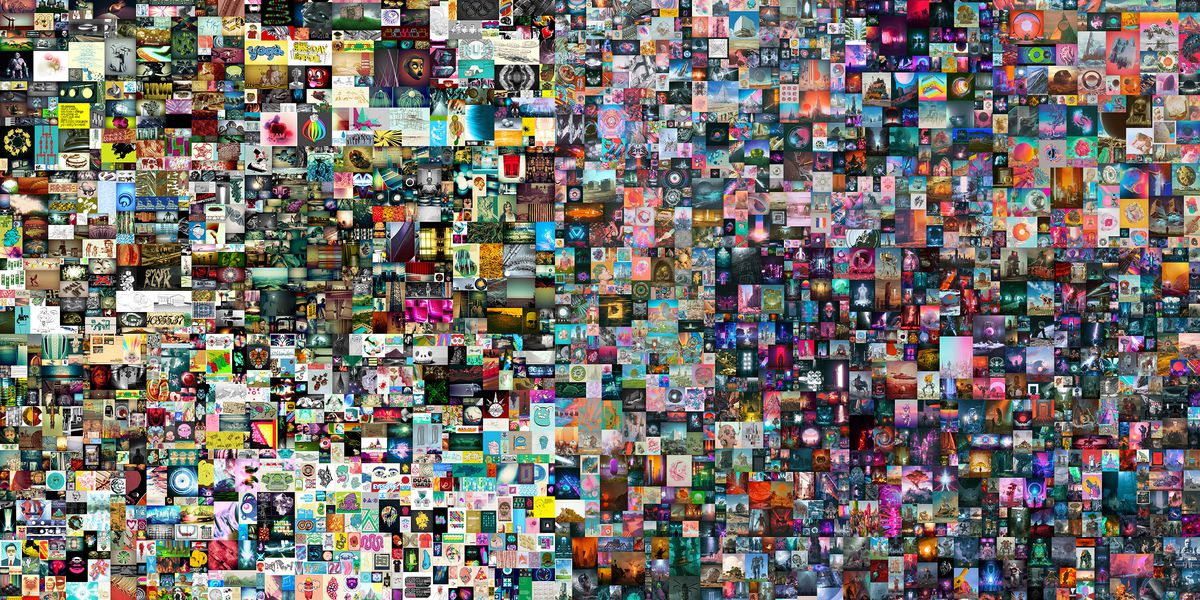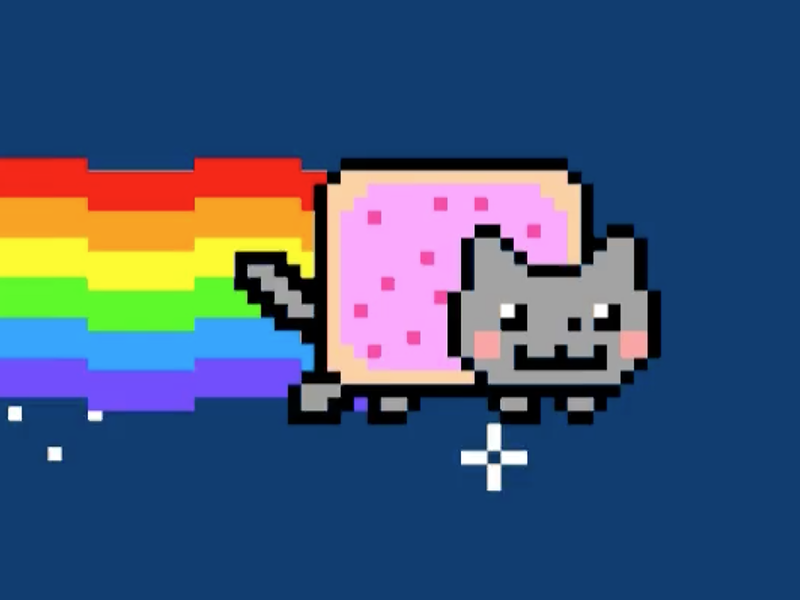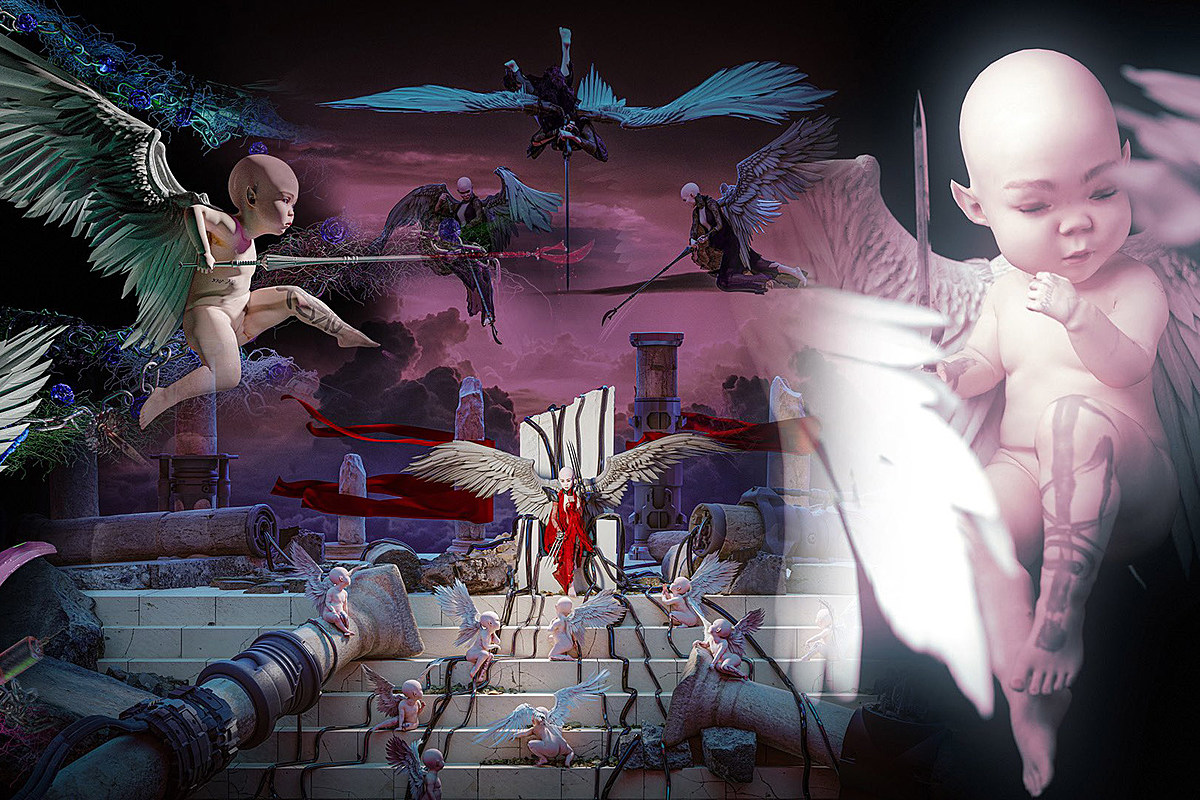NFTs are all anyone can seem to talk about these past few weeks. But what are they, how are they impacting the music industry, and what do they mean for artists?
WHAT ARE NFTs?
NFTs (“non-fungible tokens”) are a form of crypto-art that were first created in 2014. They are made using blockchain technology, which records information in a way that is transferable, but not alterable or erasable (you may recognize blockchain technology as the tool used to make virtual money, also known as Bitcoin). Pertaining to NFTs, this technology is being used to create original, limited edition digital art that has been virtually “signed” by an artist. Fundamentally, owning an NFT is like owning a virtual version of an autographed, limited edition CD.
NFTs place the artists in control of the creation and distribution of their products. They decide how many NFTs are created of each piece, then sell or auction their work using an online NFT marketplace like opensea.io. Artists often choose to place NFTs on sale for a very limited time in order to raise their value and increase publicity.
The sky truly is the limit on what can be transferred as a non-fungible token. This means that musicians can sell almost anything, including limited edition digital albums, in-person experiences, physical and digital art collections, 3D images, unreleased songs, exclusive videos, physical albums, and more.
After purchasing an NFT, the owner can transfer or sell it (with on average 10-15% of the resale price going to the original artist!), but can never copy it, making NFT art truly one of a kind. This is a significant development in technology, marking one of the first times that a digital product has been created in such a way that it is not copyable. Unsurprisingly, this characteristic is very attractive to the music industry, which has been plagued with issues of piracy since the invention of Napster in the early 2000s. However, the “rarity” of the NFT is fundamentally artificial, as the token itself is one of a kind and uncopyable (due to an authenticity certificate), but the artwork attached can still technically be shared, re-released, or re-created.
WHAT ROLE DO NFTs PLAY IN THE MUSIC INDUSTRY?
NFTs possess a significant potential to help musicians make more money, more directly. It’s no secret that making a livable wage is challenging for artists, largely due to the rise of online music platforms where streams are valued at less than a cent. A recent study posted by Loud & Clear, Spotify’s new transparency platform, reported that only 13,400 of the millions of artists on the platform made over $50,000 on their catalogue last year, with only 7,800 artists making $100,000. In addition, the top 1% of streaming artists account for 90% of all streaming income. Furthermore, most of the money made through streaming doesn’t even go to musicians, with middlemen like record labels intercepting 88% of profits on average. Because of these disheartening statistics, many artists rely on concerts and festivals to procure their livelihood. However, due to the COVID-19 pandemic, live performances have not been possible, leaving many artists with practically no income.
In the context of this financial crisis, NFTs seem to be an attractive solution, offering a way for artists to make more money for their work by avoiding middlemen that function to seize large chunks of their profits. Some people even hope that NFTs could lead to a future where crypto art could cut out the need for intermediaries like streaming services and record labels, or at least change the power dynamics of the industry and incentivize corporations to better compensate musicians. There are many new companies leading the way in this digital revolution, such as Bluebox, which is using NFT technology to “prepare creators for the music industry of tomorrow, [by] enabling them to reclaim missed monetization opportunities such as fictionalized copyrights, capitalization options, and sales of future royalties.”
WHO’S SELLING NFTs?
Many prominent artists have jumped on the NFT bandwagon in the past couple of months, with some making astoundingly large sums of money.
At the end of February, electro-pop star Grimes made $6 million in NFT sales. She sold ten products, raging in price and number of copies, including original artwork and short videos set to her music. In addition, 3LAU recently broke many records by making $11.7 million in NFT sales as part of the three year anniversary of his album Ultraviolet. The popular DJ sold 33 NFTs that varied in value and content, with the most expensive token offering a custom song, access to new, unheard music, a personalized piece of art, access to new versions of Ultraviolet’s songs, and a vinyl record of the album.
On March 5, Kings of Leon dropped When You See Yourself, one of the first major albums to be released in NFT form. Each token included an exclusive piece of album artwork and a limited edition vinyl, and the band made over $2 million in their limited, two week long sale. At the end of the two weeks, all unsold NFTs were “burned,” meaning they disappeared forever, with the promise that no new pieces would be produced.
DJ Steve Aoki made $4.25 million through the one-day sale of his ‘Dream Catcher’ NFT art collection. He sold 11 pieces, each comprised of a unique soundscape and a digital animation created in partnership with designer Antoni Tudisco. Pop sensation Shawn Mendes also ventured into NFT sales last month, making $600,000 selling digital outfits for his fans’ avatars. These are examples of some of the biggest names and most lucrative sales, but many artists have been taking advantage of NFT technology as an additional source of income.
WHO’S BUYING NFTs?
NFTs can clearly be an extremely lucrative and beneficial business for musicians, but what is in it for the buyers? As it turns out, not very much. Beyond owning a piece of digital art and supporting an artist, the buyers don’t receive much more than bragging rights and a possibly lucrative exchange rate in the NFT resale market. As venture capitalist Ben Horwowitz told the New York Times, “You’re buying a feeling.”
The thing is, it’s hard for the average person to even imagine paying millions of dollars for a “feeling.” In reality, NFTs are a luxury purchase for the uber wealthy, with these recent high-value sales creating a largely inaccessible digital marketplace. This fact has led many people to raise questions about whether NFTs are really a viable way for more artists to directly make money for their music, or if the tokens have just created another forum where famous musicians like Halsey and Quavo will continue to make millions while smaller artists are still left behind. As Pitchfork said last week, “does it really mean anything to the average struggling artist that Grimes is now $6 million richer?”
In addition to posing questions pertaining to NFTs’ ability to help artists, many people are also cynical about the value of NFTs, raising concerns that financial worth is being placed on a “digital certificate of authenticity,” rather than the artwork itself.
THE FUTURE OF MUSIC AND NFTs
Remarkably, February saw $179.4 million in NFT transactions – more than double the amount of money made by all NFT sales in 2020. But how long are these extreme profits going to last? In reality, the high NFT prices are indicative of the current hype, and probably not an accurate representation of the level of income that these tokens can make for musicians. Just like how Bitcoin values and stocks fluctuate, these astoundingly high-value sales are likely another example of market volatility and investors being influenced by current trends. It’s impossible to predict how long the NFT hype will last, but it’s no surprise that prices are already dropping.
As of right now, despite their potential, NFTs have failed to significantly level the playing field and make wealth accessible to most musicians, challenging people’s hopes that NFTs are the new face of the industry. However, regardless of the financial future of NFTs in music, these recent sales have started many valuable conversations pertaining to the pitfalls in how we compensate artists, and they represent a significant shift in the way our culture values music. Many musicians and industry professionals are optimistic that this new technology can help us build a future industry that is designed to reward artists for their creativity and hard work and compensate them in a productive and fair way.



